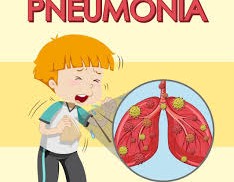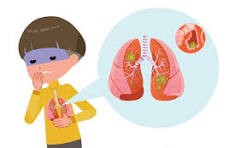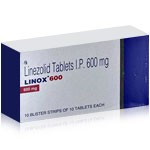Pneumonia Explained: Understanding, Preventing, and Treating Lung Infections


What is Pneumonia?
Have you ever wondered what happens when the lungs become filled with infection instead of air?
Pneumonia is a serious condition where the tiny air sacs in the lungs, known as alveoli, fill up with fluid or pus. This makes it hard for the body to get enough oxygen. Pneumonia can affect anyone, but it is especially dangerous for young children, older adults, and people with weaker immune systems.
- Pneumonia is an infection of the lungs.
- It can be caused by bacteria, viruses, or fungi.
- The illness makes breathing painful and difficult.
- Some cases can be mild, while others can be life-threatening.
This condition needs quick attention because it can get worse if untreated.
Main Causes of Pneumonia
The question often asked is: why do people get pneumonia?
The causes are different, but most of the time it is due to germs entering the lungs. The body usually fights off these germs, but if the immune system is weak, the infection can spread.
- Bacterial infections are the most common cause.
- Viruses such as influenza can lead to pneumonia.
- Fungal infections sometimes play a role, especially in those with poor immunity.
- Breathing harmful chemicals or food going into the lungs can also cause pneumonia.
Knowing the cause helps doctors choose the right treatment.
Symptoms That Should Not Be Ignored
What are the signs that show someone might have pneumonia?
Symptoms can look similar to a cold or flu at first, but they become worse as the infection grows.
- Strong cough that brings up mucus or pus.
- Chest pain when breathing or coughing.
- Fever, chills, and sweating.
- Shortness of breath or very fast breathing.
- Feeling weak, tired, and confused (especially in older adults).
When these symptoms appear, it is important to seek medical help quickly.
Risk Factors That Increase the Danger
Why do some people get pneumonia more easily than others?
Certain conditions and lifestyles make the body less able to fight infection.
- Older adults and small children are at greater risk.
- Smoking damages the lungs and raises the chance of infection.
- People with heart disease, diabetes, or weakened immune systems are more vulnerable.
- Staying in hospitals for a long time increases the risk of bacterial pneumonia.
Understanding these risks helps in taking preventive steps.
How Pneumonia is Diagnosed
How do doctors know if someone has pneumonia?
Doctors use several ways to find out what is happening in the lungs.
- Listening to the chest with a stethoscope to hear abnormal sounds.
- Chest X-ray to see if there is infection or fluid in the lungs.
- Blood tests to find signs of infection.
- Testing mucus from cough to see which germ caused the illness.
A correct diagnosis is important to make sure treatment is effective.
Common Treatments for Pneumonia
What happens once pneumonia is confirmed?
The treatment depends on the cause and how severe the illness is.
- Bacterial pneumonia is often treated with antibiotics.
- Viral pneumonia may need rest, fluids, and sometimes antiviral medicines.
- Pain relievers and fever reducers help make breathing easier.
- Oxygen therapy is used in serious cases when breathing is difficult.
The main goal of treatment is to remove infection and support the body in healing.
Linox (Linezolid) as a Modern Option
How do doctors manage pneumonia when usual medicines do not work?
In some cases, pneumonia may be caused by bacteria that resist standard antibiotics. Here, stronger treatments are needed.
- Linox (Linezolid) is one option used when common treatments are not effective.
- It is used in difficult cases where resistant bacteria are found.
- Helps in treating pneumonia that does not respond to standard care.
- Used in hospitals under close medical supervision.
- It plays an important role when stronger support is required.
This medicine is not for mild infections but for complicated situations.
When Linox (Linezolid) Becomes Vital
Why would a doctor choose Linox (Linezolid) instead of regular treatment?
Sometimes, pneumonia bacteria develop resistance, making recovery slower. In these cases, Linox is considered because it can stop the growth of strong bacteria.
- Doctors may use it for hospital-acquired pneumonia.
- It is considered when the infection is caused by resistant bacteria.
- Patients using this treatment are usually monitored closely.
- It is part of modern solutions to fight serious lung infections.
This shows the progress of medicine in managing life-threatening pneumonia.
Benefits and Care with Linox (Linezolid)
What should patients know about using Linox (Linezolid)?
While it is powerful against resistant pneumonia, it also requires careful medical oversight. Doctors weigh both the benefits and the possible effects before prescribing it.
- It may shorten recovery time in severe bacterial infections.
- It is generally used when other medicines fail.
- Doctors monitor patients for side effects and overall progress.
- It represents one of the newer tools in the fight against resistant lung infections.
By using such advanced options wisely, healthcare providers improve patient safety and survival.
Final Thoughts
Pneumonia is more than a simple lung infection. It can quickly become serious if ignored. Knowing the causes, symptoms, and risk factors allows people to act early. Modern treatments, including advanced medicines like Linox, give hope for difficult cases. Protecting lung health, avoiding smoking, and seeking medical help when symptoms appear can save lives.
Drug Description Sources:
U.S. National Library of Medicine, Drugs.com, WebMD, Mayo Clinic, RxList
Reviewed and Referenced By:
- Dr. Alan Carter, PharmD
Clinical pharmacist often cited on Drugs.com for his expertise in antibiotic treatments and drug safety.
- Dr. Emily Johnson, MD
Pediatric specialist contributing to WebMD with insights on respiratory infections and treatments for children.
- Dr. Michael Rivera, PharmD
Pharmacology expert referenced on RxList for his work on antibiotic therapy and resistance.
- Dr. Sarah Lee, MD
Internal medicine physician whose guidance is reflected in Mayo Clinic educational content about lung diseases.
- Dr. Robert Harris, PhD
Medical researcher with work connected to the U.S. National Library of Medicine, providing trusted data on infections and treatments.
Article Post: Editorial Team of RXShop.md
(Updated at Sep 8 / 2025)

